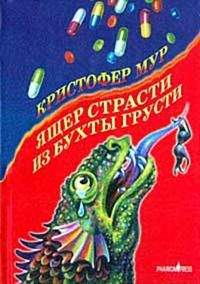Кейт Динни - Брендинг территорий. Лучшие мировые практики
255. Tregear, A. (1998), Artisan producers in the UK food system: Attributes and implications, paper presented at the Agricultural Economics Society Annual Conference, University of Reading, 26 March 1998.
256. Tregear, A. (2003), From Stilton to Vimto: Using food history to re-think typical products in rural development, Sociologia Ruralis, Vol. 43, No. 2, pp. 91–108.
257. Trubek, A. (2008), The Taste of a Place: A Cultural Journey into Terror, University of California Press, Berkeley, United States.
258. Trueman, M., Cook, D. and Cornelius, N. (2008), Creative dimensions for branding and regeneration: Overcoming negative perceptions of a city, Place Branding and Public Diplomacy, Vol. 4, No. 1, pp. 29–44.
259. Trueman, M., Klemm, M. and Giroud, A. (2004), Can a city communicate? Bradford as a corporate brand, Corporate Communications: An International Journal, Vol. 9, No. 4, pp. 317–330.
260. United Nations (2005), World Urbanization Prospects: The 2005 Revision, Population Division, Department of Economic and Social Affairs, United Nations, available at: http://www.un.org/esa/population/publications/WUP2005/2005wup.htm
261. United Nations Population Fund (2007), State of World Population 2007: Unleashing the Potential of Urban Growth, available at: http://www.unfpa.org/swp/2007/english/introduction.html (accessed 15 May 2010).
262. Urry, J. (1990), The Tourist Gaze: Leisure and Travel in Contemporary Societies, Sage, London, United Kingdom.
263. Urry, J. (1995), Consuming Places, Routledge, London, United Kingdom.
264. Urry, J. (2002 [1990]), The Tourist Gaze: Leisure and Travel in Contemporary Societies, Second edition, Sage Publications, London, United Kingdom.
265. Valerio, R., Baker B. and Gulloch, G. (1999), Wollongong Image Strategy, Report to Wollongong City Council, Wollongong, Australia.
266. Vallaster, C. and de Chernatony, L. (2006), Internal brand building and structuration: The role of leadership, European Journal of Marketing, Vol. 40, No. 7/8, pp. 761–784.
267. van Gelder, S. (2008), An introduction to city branding, available at: www.placebrands.net/files/An_lntroduction_to_City_Branding.pdf (accessed 20 January 2010).
268. Vanolo, A. (2008), Internationalization in the Helsinki metropolitan area: Images, discourses and metaphors, European Planning Studies, Vol. 16, No. 2, pp. 229–252.
269. Vastu-Shilpa Foundation (2002), The Ahmedabad Chronicle: Imprints of a Millennium, Vastu Shilpa Foundation for Studies and Research in Environmental Design, Ahmedabad, India.
270. Vasudevan, S. (2008), The role of internal stakeholders in destination branding: Observations from Kerala tourism, Place Branding and Public Diplomacy, Vol. 4, No. 4, pp. 331–335.
271. Verlegh, R.W.J. and Steenkamp, J-B.E.M. (1999), A review and meta-analysis of country-of-origin research, Journal of Economic Psychology, Vol. 20, No. 5, pp. 521–546.
272. Visit Aarhus (2010), Frontpage, available at: http://www.visitaarhus.com/international/en-gb/menu/turist/turist-maalgruppe-forside.htm (accessed 5 February 2010).
273. Waller, J. and Lea, S.E.G. (1999), Seeking the real Spain? Authenticity in Motivation, Annals of Tourism Research, Vol. 26, No. I, pp. 110–129.
274. Watson, S. (1991), Gilding the smokestacks: The new symbolic representations of de-industrialised regions, Environment and Planning D: Society and Space, Vol. 9, No. I, pp. 59–70.
275. Weisman, A. (2007), The World Without Us, St Martin Press, New York, United States.
276. White, C. and Raman, N. (1999), The World Wide Web as a public relations medium: The use of research, planning and evaluation in website development, Public Relations Review, Vol. 25, No. 4, pp. 405–513.
277. Williams, A., Kitchen, R., Randall, J. and Muhajarine, N. (2008), Changes in quality of life perceptions in Saskatoon, Saskatchewan: Comparing survey results from 2001 and 2004, Social Indicators Research, Vol. 85, No. 1, pp. 5–22.
278. Winn, M. (2008), Central Park in the Dark: More Mysteries of Urban Wildlife, Farrar, Straus and Giroux, New York, United States.
279. Winter, C. (2009), Branding Finland on the Internet: Images and Stereotypes in Finland’s Tourism Marketing, Master’s Thesis, University of Jyvaskyla, Jyvaskyla, Finland, available at: https://jyx.jyu.fi/dspace/bitstream/handle/123456789/21829/URN_NBN_fi_jyu-200910073971.pdf?sequence=I (accessed 28 May 2010).
280. Wolf, E. (2006), Culinary Tourism: The Hidden Harvest, Kendall/Hunt Publishing Company, United States.
281. Wollongong City Council (2010a), Community Profile, available at: http://profile.id.com.au/Default.aspx?id=302 (accessed 15 January 2010).
282. Wollongong City Council (2010b), City of Innovation, available at: http://www.wollongong.nsw.gov.au/ (accessed 15 January 2010).
283. Wong, A. (2008), Heritage and ecology may become part of Hong Kong branding, South China Morning Post, 29 September p. 5.
284. Yale Center for Environmental Law and Policy, and Center for International Earth Science Information Network, Columbia University (2010), 2010 Environmental Performance Index, Yale University, Yale, available at: http://epi.yale.edu/file_columns/0000/0008/epi-20l0.pdf (accessed 5 February 2010).
285. Yoder, D. (1981), The sausage culture of the Pennsylvania Germans, in Fenton, A. and Owen, T.M. (eds), Food in Perspective: Proceedings of the Third International Conference on Ethnological Food Research, Cardiff Wales, 1977, J. Donald Publishers Ltd, Edinburgh, United Kingdom, pp. 409–425.
286. Zanina, R. (2010), We’re tops in tourism, Travel Times /New Straits Times [online], available at: http://travel.nst.com.my/article/FeatureStory/20100105100226/Article/print_html (accessed 29 January 2010).
287. Zeller, Jr. T. (2009), Bloomberg eyes Danish offshore wind farm and sees New York’s future, New York Times, 14 December, available at: http://greeninc.blogs.nytimes.com/2009/l2/l4/bloomberg-eyes-danish-offshore-wind-farm-and-sees-new-yorks-future/?scp=3&sq=copenhagen%20wind&st=cse (accessed 5 February 2010).
288. Zenker, S. (2009), Who’s your target? The creative class as a target group for place branding, Journal of Place Management and Development, Vol. 2, No. 1, pp. 23–32.
289. Zhang, L. and Zhao, S.X. (2009), City branding and the Olympic effect: A case study of Beijing, Cities, Vol. 26, No. 5, pp. 245–254.
290. Baker, B. (2007), Destination Branding for Small Cities: The Essentials for Successful Place Branding, Creative Leap Books, Portland Oregon, USA. Succinct and compelling, an easy-read recipe for branding success from one of today’s top destination marketers and an architect of the Australian Tourism Commission’s ‘Shrimp on the Barbie’ campaign.
291. Greenberg, M. (2008), Branding New York City: How a City in Crisis Was Sold to the World, Routledge, London and New York. Meticulously researched, this study is written by a sociologist rather than a marketer; and provides an interesting perspective on New York City’s woes during the 1970s as the campaign was developing.
Примечания
1
В 2012 году численность населения Земли составила 7 млрд человек. Прим. ред.
2
Стейкхолдеры – различные заинтересованные лица, для нужд которых адаптируются процедуры управления проектами. Прим. ред.
3
Издана на русском языке: Аакер Д., Йохимштайлер Э. Бренд-лидерство: новая концепция. М.: Гребенников, 2003. Прим. ред.
4
Издана на русском языке: Котлер Ф., Асплунд К., Рейн И. Маркетинг мест. Привлечение инвестиций, предприятий, жителей и туристов в города, коммуны, регионы и страны Европы. СПб.: Стокгольмская школа экономики в Санкт-Петербурге, 2005. Прим. ред.
5
Издана на русском языке: Линч К. Образ города. М.: Стройиздат, 1982. Прим. ред.
6
Издана на русском языке: Сафон К. Тень ветра. М.: АСТ: Астрель, 2010. Прим. ред.
7
Кооптация – пополнение какого-либо органа дополнительными участниками по его собственному усмотрению. Прим. ред.
8
Hopenhagen – корень слова от англ. hope – надежда, мечта. Прим. ред.
9
Brokenhagen – корень слова от от англ. broken – сломанный, разбитый, испорченный; Nopenhagen – в начале слова английская отрицательная частица «не»; No Hopenhagen – отрицательная частица «не» и корень слова от англ. hope – надежда, мечта. Названия, отражающие разочарование в результатах саммита. Прим. ред.



